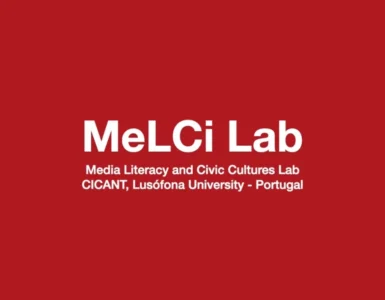by Karin Vogt & Nicole Flindt, Heidelberg School of Education, Germany.
Looking at the current discussion on AI, it seems that AI applications on a broader scale only started with the release of Open AI’s ChatGPT in November 2022. Actually, AI has been around for much longer, and it has been available in applications designed for language learners and / or language learning since the 2000s. AI can be seen as an umbrella term that encompass a number of technologies that use machine learning and deep learning to emulate human decisions, being able to sift through very large amounts of data. Both machine learning and deep learning use these masses of data to solve tasks independently (machine learning) or to train themselves with the help of multilayer deep neural networks (deep learning). With the appearance of said data-driven approaches that enable a rapid development of AI technologies, we are currently in the second wave of AI, after a period of symbolic AI that mainly worked with predetermined decision-making algorithms, and on the verge of an era that uses advanced evolutionary methods and quantum computing to emulate the human brain, exhibiting intelligence in a wide range of contexts (Boucher, 2020).
In language learning contexts, Natural Language Processing (NLP)is important as it enables computers and humans to communicate, combining rule-based modelling of human language and machine learning / deep learning models. The ubiquitous ChatGPT as well as other advanced language models on the market as a result of the giant tech companies’ AI race are subsumed under conversational AI. While conversational models have, very noticeably for the general public, illustrated the potential of (narrow) AI in a variety of fields, language learning included, they are not the only applications that can be used for language learning purposes. Here are some generative AI applications that include NLP for use in the language classroom, specifically looking at neural machine translation, writing tools, and chatbots.
When it comes to writing tools, AI-enabled writing assistance can be used in academic contexts (Automated Writing Evaluation, AWE) and in educational or professional contexts (Automated Written Corrective Feedback, AWCF). AWCF tools such as Grammarly target lower-level writing problems like grammatical or lexical errors and provide immediate feedback to help learners improve their writing competence in the target language. But the quality of feedback provided by these tools may be contested, so they should be used in conjunction with teacher feedback. Plus, peer feedback based on AWCF can promote critical use of the tool, allowing students to discuss flagged errors, identify grammatical rules, and negotiate improvements beyond the app’s recommendations.
Automatic text generation (ATG) tools are even more powerful, as they can generate whole texts. But they have limitations like a lack of substantial content and weak argumentation compared to human text production. These weaknesses can be leveraged to develop learners’ linguistic competence by analysing automatically generated texts and discussing their unsuitability in terms of argument, structure, genre, and stylistic conventions. Through guided reflection and group discussions, students can become critical users of these tools.
Chatbots simulate human-like conversations and can be used as standalone language learning tools or integrated into more complex self-learning environments. They provide tailored interactions and can be used for individual practice or in the classroom. In the classroom, chatbots can be used for individual practice phases or for focus on form activities in predictable standard conversation situations. The limitations of chatbots can be analysed and discussed in the classroom, and learners can produce variations of the bot’s output to enhance their language awareness and discourse skills. Chatbots like ChatGPT, Bing or Bard as part of generative AI can produce content and language, and this is why they are perceived as powerful. Their limitations concern biased content and language, hallucinations (inaccurate or made-up content and sources), stereotypical and uncreative language and genre aspects, among others. The shortcomings represent considerable potential for classroom activities that interpret both prompts and output in order to help raise awareness of these shortcomings, to embed the generative AI applications as one step in the process of writing in the target language, to help gain knowledge about linguistic, pragmatic, or genre-related features of the target language, or to help foster critical thinking, to name but a few.
Machine Translation (MT) tools have come a long way, especially with the advent of neural machine translation (NMT). They’re readily available on smartphones and can translate into multiple languages. But NMT tools may struggle with idiomatic language, precision of expression, cultural references and technical terms. To be able to use them in a way that is conducive to language learning, learners need to develop textual competence and analytical skills to interpret NMT output. Teachers play a crucial role in guiding learners to use NMT tools critically and develop language awareness in their learners.
So the bottom line is that generative AI offers potential benefits for language learning and teaching, developing written production and interaction competences in particular. AI tools can provide immediate feedback, promote language awareness, and enhance communication skills. But their limitations must be addressed in the language classroom through informed use and critical discussion. Teachers are indispensable in this – their guidance and integration of these tools into instructional contexts can bridge the gap between real-life use and their application that is conducive to language learning. This also applies to the new kids on the block, accessible and versatile generative AI tools like GPT series chatbots.
Authors

Karin Vogt, Heidelberg School of Education, Germany

Nicole Flindt, Heidelberg School of Education, Germany
This blog entry draws on Vogt, K. & Flindt, N. (2023). Artificial Intelligence and the future of language teacher education. A critical review of AI tools for use in the foreign language classroom. In P. Hohaus & J.-F. Heeren (Eds.), Innovating the future of teacher education (pp. 179-199). Leiden: Brill. https://doi.org/10.1163.9789004678545_008 Brill.
References:
Boucher, P. (2020). Artificial Intelligence: How does it work, why does it matter, and what can we do about it? European Union. https://www.europarl.europa.eu/RegData/etudes/STUD/2020/641547/EPRS_STU(2020)641547_EN.pdf














